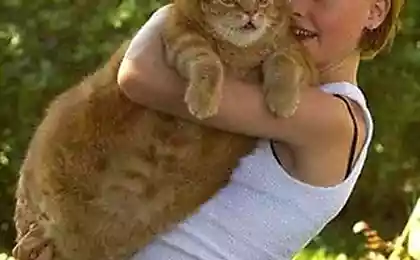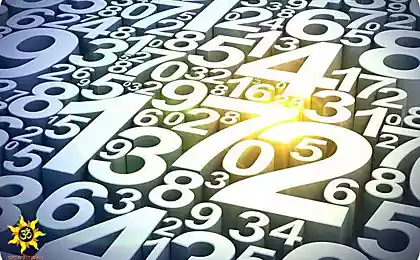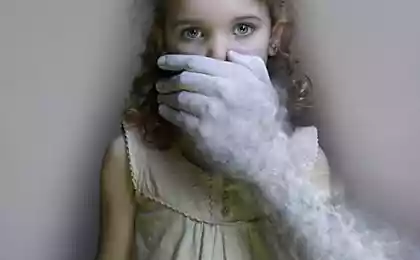1005
Animals with a reserve life

Due to the development of medicine, society and science, our life expectancy is growing every day. More and more people live to 100 years, and more than ever before. Diseases that were previously fatal, are now nothing more than a nuisance, and with the advent of new technologies, many people hope that they can prolong their life or maybe even find a way to live forever in the form of a computer. But while we think we live up to 90 years is great, some members of the animal kingdom are laughing in our faces. Below are ten animals on whose birthday cake is not enough space for a candle. 10. Sea bass (Rougheye Rockfish) 17,908,202
Despite the fact that redfish (Sebastes aleutianus) is considered one of the most long-lived marine creatures on this list, he is only the tenth place. Usually, they live at a depth of 170 - 670 meters under water in the Pacific Ocean. Along the lower edge of the eye they can be up to ten spikes. This fish grows very slowly, it is very late mature and can live up to 200 years, with most adult sample was found 205 years. 9. Red sea urchin (Red Sea Urchin)

Red sea urchin (Strongylocentrotus franciscanus) exists on our planet already 450 million years old and is the largest of all sea urchins. It can reach 25 centimeters in diameter. They usually remain on the same place, so they are covered with protective spines. Sometimes, however, they are grouped and scour (more incredibly slow crawl) in search of food. Though they do not often live up to 30 years if it is still fails, then they can live more than 200 years. 8. The Bowhead Whale (Bowhead Whale) 21,056,752
Some scientists believe that bowhead whales may be the oldest living mammals on Earth. It is believed that one whale named Bada (Bada) lived to be 211 years old, but maybe he really was not less than 245 years. Although the majority of bowhead whales die between the ages of 20 to 60 years, 4 more found bowhead whales were close in age to Bada - according to the scientists, they were 91, 135 years, 159 years and 172 years. These whales collectively found 7 harpoon, whose age is not less than a century. 7. Koi (Koi Fish)

The average age of koi carp does not exceed 50 years, which in itself is not bad. But this is even close enough to get into this list. However, the carp koi named Hanako, who died in 1977, was much more venerable age of 226 years, that is, he was born back in 1751. This means that the koi carp born before Benjamin Franklin discovered electricity, and before anyone knew that the mammoths had never existed. This means that he lived at the time of the signing of the Declaration of Independence, during the French Revolution, survived two world wars, and so on. Its age was determined by counting the rings on its scales, as well as in determining the age of the tree. 6. Pogonophora (Vestimentiferan Tubeworms) 23,884,961
Pogonophores (Lamellibrachia luymesi) is sessile creatures, which means that they are carried out on one and the same place all my adult life. This particular kind of rift dwells mainly in the northern part of the Gulf of Mexico. They live at a depth of 762 meters under water in the cold deep water creeks. Pogonophores maintain a symbiotic relationship with sulphide-oxidizing bacteria, which are their only source of food. Pogonophores grow to three meters in length and can live in groups of thousands. Given the fact that they grow extremely slowly, they can live up to 250 years. 5. The European pearl mussel (Freshwater Pearl Mussel) 18,781,105
According to estimates about 90 percent of the population of the European pearl mussel (Margaritifera Margaritifera) lives around Scandinavia. They are considered very hardy creatures that can adapt to changes in their environment is quite easy. They are not a hindrance climate change, as well as geological, physical, biological or chemical changes. However, despite this, their population has declined steadily. Those individuals who survive, are considered to be the strongest and most likely experienced more than one change of ecosystems, such as the age of the animals is more than 250 years, making it possibly the oldest existing in Europe. 4. Tortoises (Tortoise)

Tortoises (Testudinidae) are famous for the fact that they can live a very long time. On average, a healthy turtle can live up to 150 years, but still, of course, depends on the type of turtle. The oldest turtle known to science lived much longer 150 years. Advaita (Adwaita) was a pet of British general Robert Clive (Robert Clive) before she came to the zoo in Calcutta, where she spent the rest of his life 130 years. Impressive have only that at the time of her death, the zoo did not work, none of those who worked in it, when it only had brought. The turtle died due to cracks formed in her shell. After her death, the scientists conducted a radiocarbon analysis of the shell and found that her age was 250 years old, although some sources indicate 255 years, and the other 257 years. 3. Venus Ocean (Ocean Quahog) 88,986,549
Oceanic Venus is one of the species of mollusks that live mainly around the coast of Scotland. As might be expected, they move a little, buried in sand or mud, and use their gills to filter oxygen out of food and water. In order to be eaten, they are not deeply buried in the seabed, and dwell there for extended periods of time without the need for food or oxygen. Over the past few decades, ocean trawlers led to the fact that their population has declined by about 50 percent, as they die, and more on what damaged their shells, leaving them vulnerable to predators. As a result, fewer number of oceanic Venus live to old age. These clams may live up to 400 years old and the oldest discovered instance was 500 years old. 2. Antarctic sponge (Antarctic Sponge) 82,810,829
Many people do not even realize that sponges are actually animals (but if they were not, there would be no SpongeBob, is not it?). Naturally, the sponge is not very mobile creatures, and some of them are moving less than 1 millimeter a day, so it is not surprising that they grow very, very slowly, like many other animals from the list. It measured their height gives them longevity. In the world there are between five and ten thousand species of sponges, and most of them live from 3 months to 20 years. However, Antarctic sponges live much longer, and one of the scientists found patterns lived a long life, namely 1550 years. 1. Medusa (Jellyfish) 62,609,840
Most likely, this option will not surprise many people, because in the last few years of their extraordinary capabilities became more known. Type of jellyfish called Turritopsis nutricula does not have any special appearance. The length of the newborn is 1 millimeter, and they are born with eight tentacles, whereas in adults has feelers 90 and the length of their bodies 4, 5 millimeters. These small jellyfish were originally hails from the Caribbean, but now they can be found all over the world. However, things are not as good as it might seem at first glance, because they can grow and multiply. They make unique not only among the jellyfish, but among all living things that they might return to adolescence. These jellyfish are born and grow like any other animal, but when they reach a certain age, they may go back to the polyp stage and begin to grow again. In human terms it would be about as if 50-year-old man returned to the state of the infant. This means that these jellyfish are potentially immortal.
Source: www.bugaga.ru/interesting/1146737951-10-zhivotnyh-s-ochen-bolshoy-prodolzhitelnostyu-zhizni.html
























